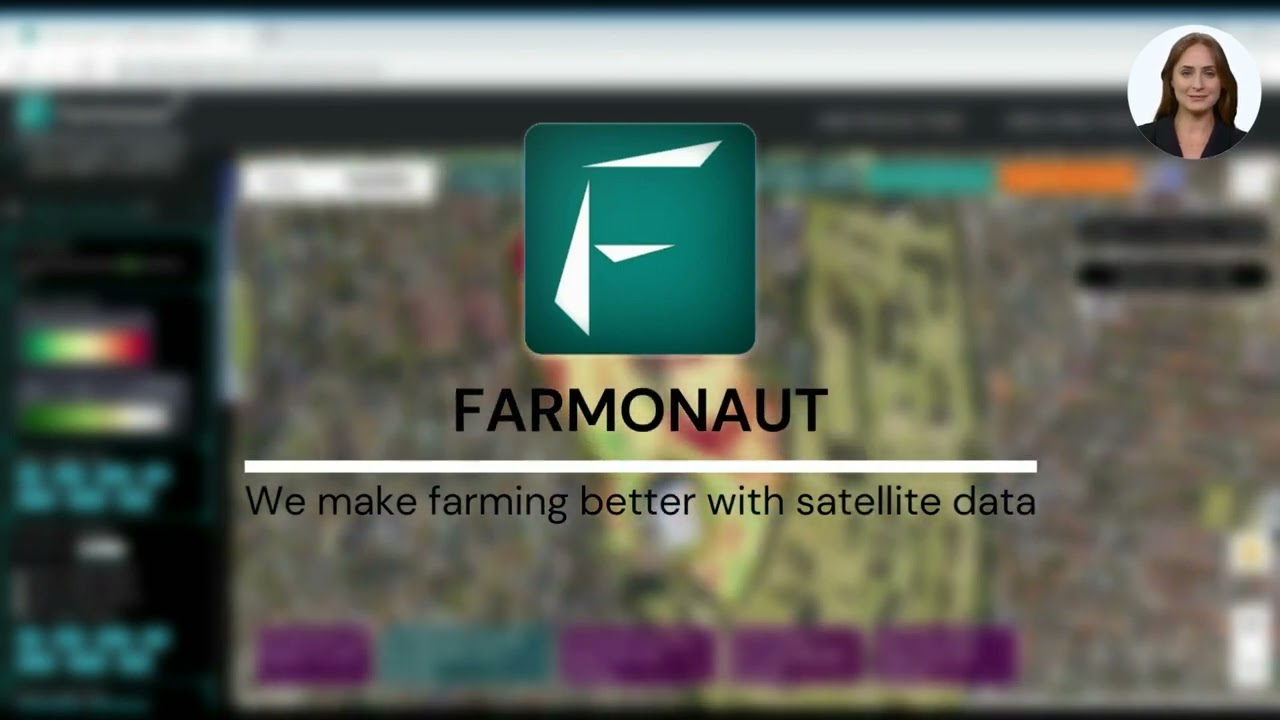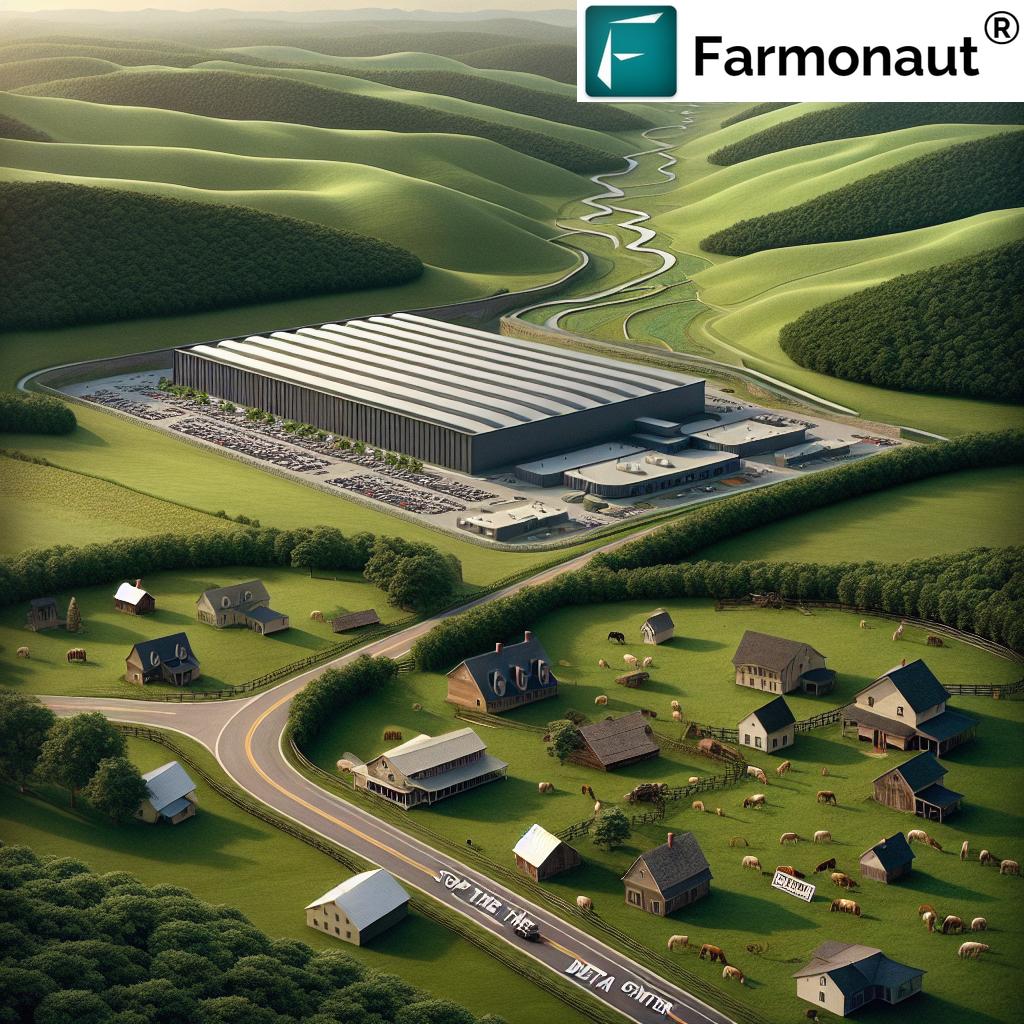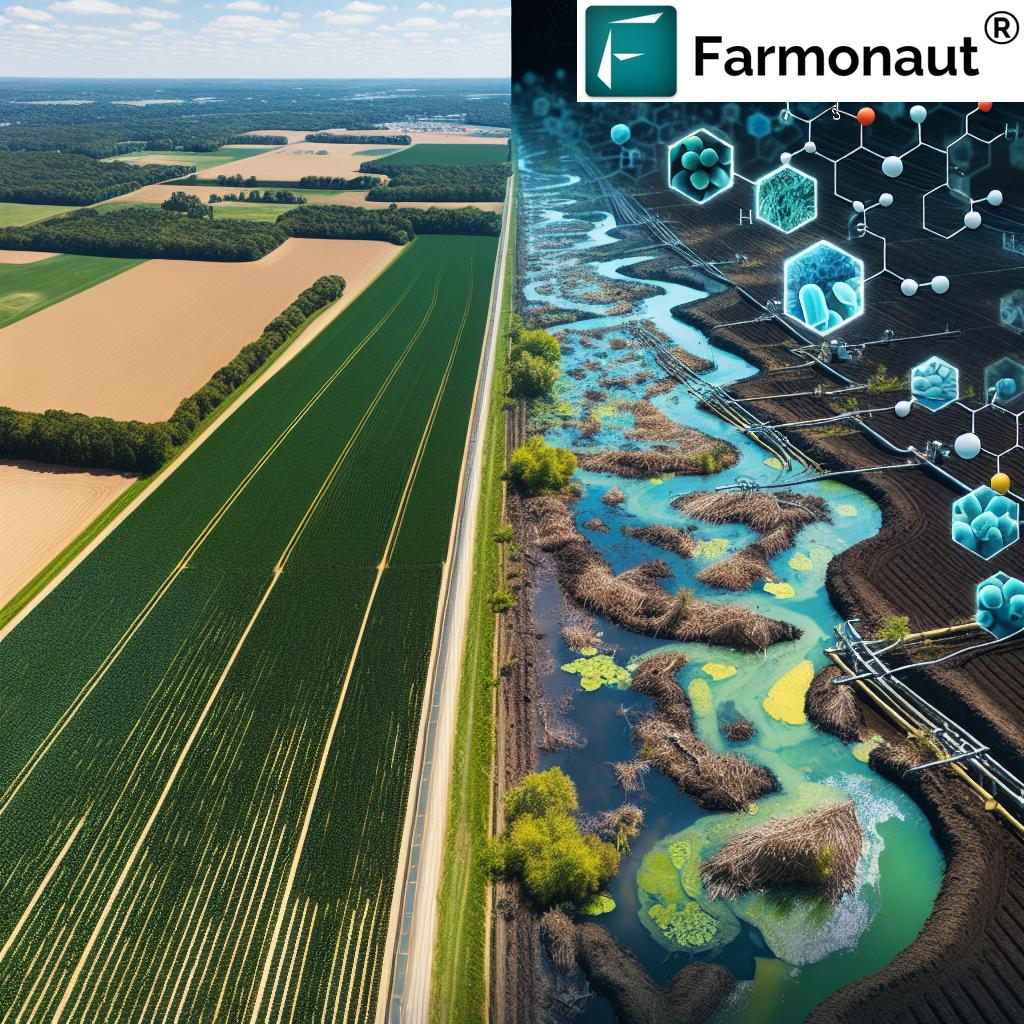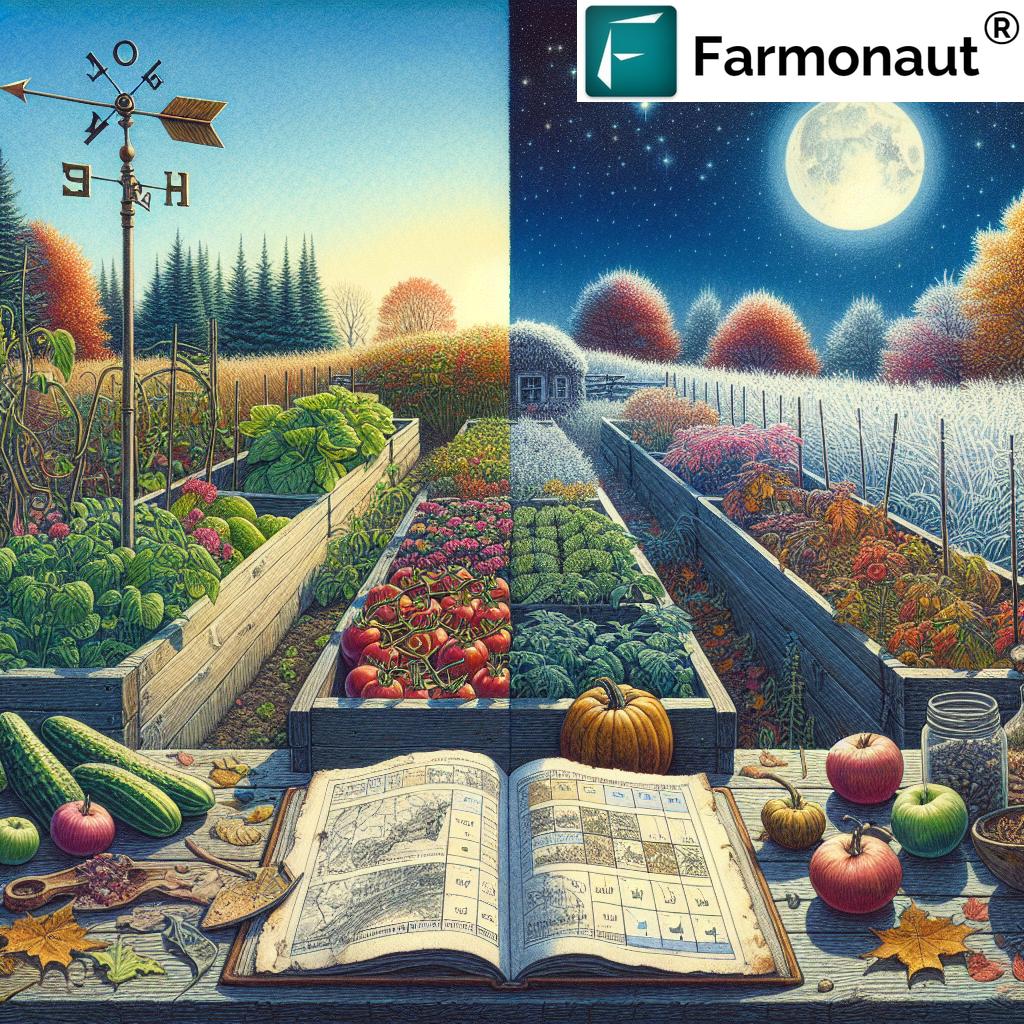Revolutionizing Sustainable Agriculture: How Bees and Technology Combat White Mold in North Dakota Crops
“Bumblebees can effectively deliver biological control agents to combat white mold in over 3 major North Dakota crops: soybeans, canola, and sunflowers.”
In the heart of North Dakota’s fertile plains, a revolutionary approach to sustainable agriculture is taking flight. We’re witnessing a fascinating convergence of nature’s tiny workers and cutting-edge technology in the fight against one of the most persistent threats to crop health: white mold. This groundbreaking method not only promises to transform pest control but also holds the key to enhancing crop yields while reducing our reliance on synthetic pesticides.
At Farmonaut, we’re excited to explore this innovative intersection of biology and technology. Our mission to make precision agriculture accessible aligns perfectly with these emerging sustainable practices. While we focus on satellite-based farm management solutions, we recognize the importance of diverse approaches in modern agriculture. Let’s delve into how bees are becoming unlikely heroes in the world of crop protection.
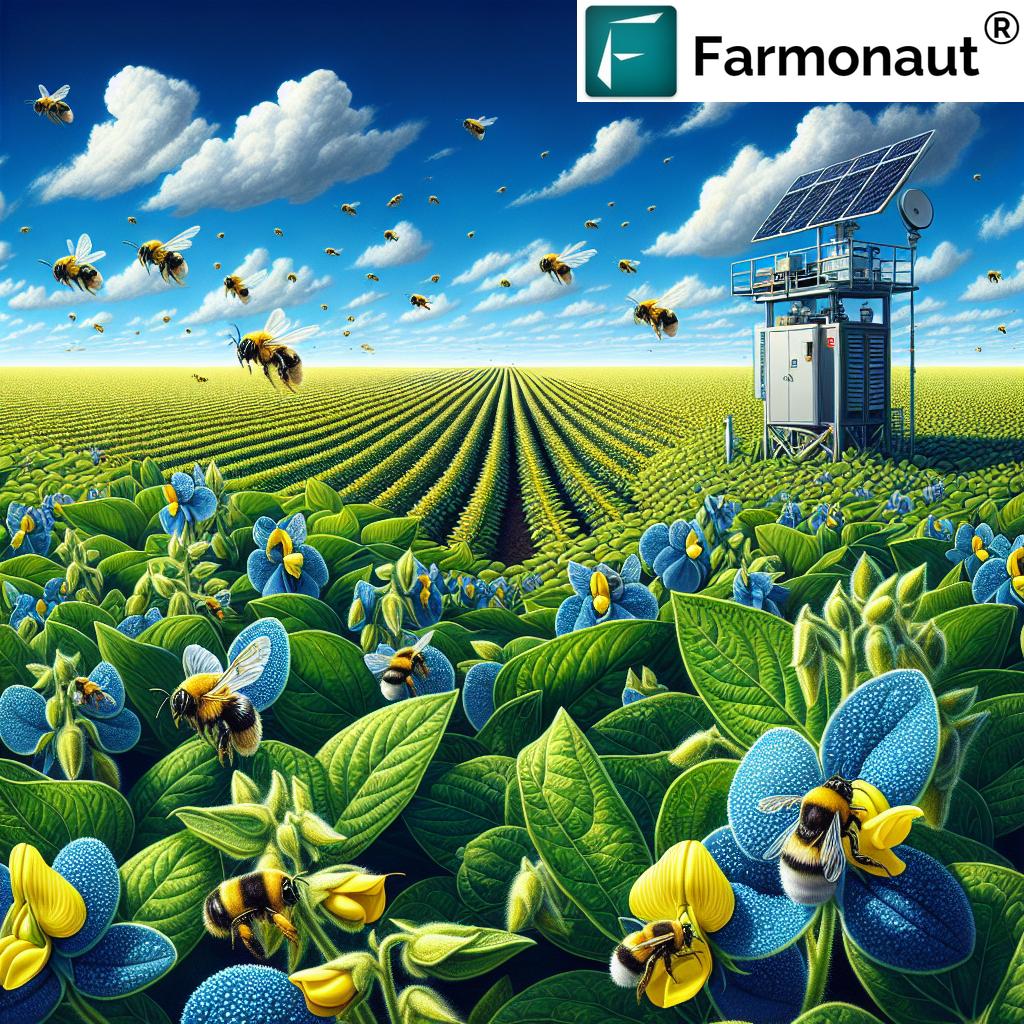
The Buzz About Bee Vectoring Technology
Bee Vectoring Technology (BVT) is an innovative pest control method that harnesses the natural foraging behavior of bees to deliver biological control agents directly to crops. This approach is particularly effective in combating white mold, a devastating fungal disease that affects a wide range of crops, including soybeans, canola, and sunflowers – staples of North Dakota’s agricultural landscape.
Here’s how it works:
- Bumblebees are housed in specially designed hives placed strategically around the field.
- As the bees exit their hives, they pass through a tray containing a powdered form of the biological control agent.
- The powder adheres to the bees’ legs and bodies.
- As the bees visit flowers for nectar and pollen, they deposit small amounts of the control agent onto the plants.
- This targeted delivery system ensures that the biological agent reaches the exact spot where it’s needed most – the flowers where white mold infection often begins.
The beauty of this system lies in its precision and efficiency. Unlike broad-spectrum pesticide sprays, BVT delivers the control agent exactly where it’s needed, reducing waste and minimizing environmental impact.
The North Dakota Initiative
North Dakota, known for its vast agricultural lands, is at the forefront of adopting this groundbreaking technology. The state’s Department of Agriculture, in collaboration with the National Sunflower Association and various grower groups, has initiated trials to test the efficacy of BVT in combating white mold across different crops.
These trials are not just about pest control; they represent a shift towards more sustainable agriculture practices. By reducing reliance on synthetic pesticides, farmers can:
- Minimize environmental impact
- Reduce production costs
- Enhance the quality and safety of their produce
- Promote biodiversity in their fields
At Farmonaut, while we specialize in satellite-based crop monitoring, we’re excited about complementary technologies like BVT that contribute to sustainable farming. Our satellite monitoring tools can work hand-in-hand with BVT, helping farmers track crop health and identify areas that might benefit most from this targeted pest control approach.
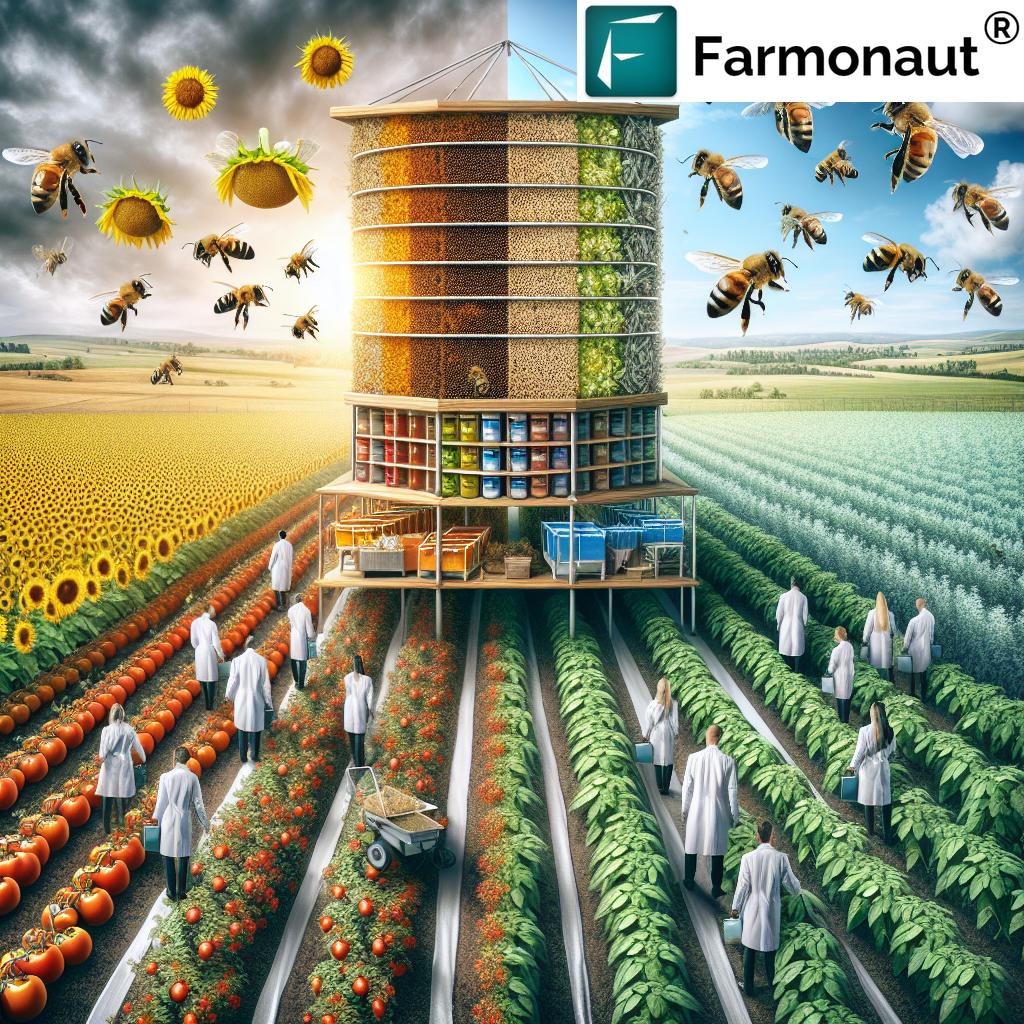
The Science Behind the Solution
The biological control agent used in BVT is typically a naturally occurring fungus that inhibits the growth of white mold. This fungus, when delivered to the plant by bees, establishes itself on the flower, creating a protective barrier against white mold spores.
What makes this approach particularly effective is its dual action:
- Preventive Control: By colonizing the flower before white mold can establish itself, the beneficial fungus prevents infection.
- Plant Health Promotion: Many of these biological agents not only fight pathogens but also enhance plant growth and stress resistance.
This scientific approach aligns with our philosophy at Farmonaut of using data-driven insights to improve farming practices. While we focus on satellite imagery and AI for crop health monitoring, BVT complements these efforts by providing ground-level, targeted crop protection.
Beyond White Mold: Expanding Applications
While the focus in North Dakota is primarily on combating white mold in crops like soybeans, canola, and sunflowers, the potential applications of BVT are far-reaching. Researchers and agricultural experts are exploring its use in various other crops and against different pathogens.
Some promising areas include:
- Fruit Crops: BVT has shown potential in controlling diseases in strawberries, blueberries, and raspberries.
- Vegetable Production: Trials are underway for crops like tomatoes and peppers.
- Orchard Management: Apple and almond orchards could benefit from this targeted approach to pest control.
This versatility makes BVT an exciting prospect for sustainable agriculture across various regions and crop types.
“USDA-supported bee vectoring technology trials in North Dakota aim to reduce synthetic pesticide use across multiple fruit and vegetable crops by up to 98%.”
Environmental Benefits and Sustainability
One of the most compelling aspects of BVT is its alignment with sustainable agriculture practices. Here’s how this technology contributes to environmental stewardship:
- Reduced Chemical Use: By delivering biological control agents precisely where needed, BVT significantly reduces the need for broad-spectrum chemical pesticides.
- Minimal Environmental Impact: The biological agents used are naturally occurring and pose minimal risk to non-target organisms.
- Support for Pollinators: This technology not only utilizes bees but also supports their populations by providing them with additional foraging opportunities.
- Water Conservation: Unlike traditional spraying methods, BVT doesn’t require water for application, contributing to water conservation efforts.
At Farmonaut, we’re committed to promoting sustainable farming practices through our technology. Our satellite-based crop monitoring can help farmers identify areas where BVT might be most effective, further enhancing its environmental benefits.
Economic Implications for Farmers
The adoption of BVT technology presents several economic advantages for farmers:
- Cost-Effective Pest Control: While initial setup costs may be involved, the ongoing expenses are often lower than traditional pesticide applications.
- Increased Crop Yields: By effectively controlling diseases like white mold, farmers can expect improved crop yields and quality.
- Premium Market Access: Produce grown with reduced pesticide use often commands premium prices in certain markets.
- Labor Savings: The self-dispersing nature of BVT means less time and labor spent on pesticide application.
These economic benefits align well with our mission at Farmonaut to make farming more efficient and profitable. Our satellite-based crop monitoring API can provide valuable data to help farmers optimize their use of BVT and other agricultural technologies.
Challenges and Considerations
While BVT shows great promise, it’s important to acknowledge the challenges and considerations in its implementation:
- Weather Dependence: Bee activity is influenced by weather conditions, which can affect the consistency of control agent delivery.
- Scale of Application: Large-scale implementation may require significant numbers of bee hives and careful management.
- Integration with Existing Practices: Farmers need to adapt their current pest management strategies to incorporate BVT effectively.
- Regulatory Considerations: As a relatively new technology, BVT may face regulatory hurdles in some regions.
At Farmonaut, we understand the importance of addressing such challenges in agricultural innovation. Our technology can help by providing real-time weather data and crop health information, assisting farmers in making informed decisions about when and where to deploy BVT most effectively.
The Future of Sustainable Crop Protection
As we look to the future, the integration of BVT with other advanced agricultural technologies holds exciting possibilities:
- Precision Agriculture: Combining BVT with GPS and drone technologies for even more targeted application.
- AI and Machine Learning: Using predictive models to optimize the timing and location of BVT deployment.
- Customized Biological Agents: Developing specific strains of beneficial microorganisms tailored to different crops and pathogens.
- Global Adaptation: Expanding BVT use to address crop protection challenges in various climates and farming systems worldwide.
At Farmonaut, we’re excited about these developments and how they align with our mission of advancing precision agriculture. Our API developer documentation provides insights into how our satellite data can be integrated with emerging technologies like BVT for comprehensive farm management solutions.
Comparative Analysis: BVT vs. Traditional Pesticide Use
| Aspect | Bee Vectoring Technology | Traditional Pesticides |
|---|---|---|
| Environmental Impact | Low | High |
| Cost Effectiveness | Estimated 20-30% savings | Standard costs |
| Crop Yield Increase | Estimated 10-20% | Variable |
| Pest Control Efficacy | Up to 98% reduction in white mold | Variable, often less targeted |
| Pollination Benefits | Yes | No |
| Application Frequency | Continuous as needed | Scheduled applications |
| Residue on Crops | Minimal | Significant |
This comparison clearly illustrates the advantages of BVT in terms of environmental sustainability, cost-effectiveness, and additional benefits like pollination. While traditional pesticides have their place in agriculture, BVT offers a more targeted and eco-friendly approach to pest management.
The Role of Technology in Modern Agriculture
The integration of BVT in North Dakota’s agricultural practices is just one example of how technology is revolutionizing farming. At Farmonaut, we’re at the forefront of this technological revolution, providing farmers with powerful tools for precision agriculture.
Our satellite-based crop monitoring solutions complement innovations like BVT by offering:
- Real-time Crop Health Monitoring: Detect issues early, allowing for timely interventions.
- AI-driven Advisory Systems: Receive personalized recommendations for crop management.
- Resource Optimization: Make informed decisions about water usage, fertilizer application, and pest control.
By combining these technologies, farmers can create a holistic approach to sustainable agriculture that maximizes yields while minimizing environmental impact.
Empowering Farmers with Knowledge and Tools
As we embrace these new technologies, it’s crucial to empower farmers with the knowledge and tools they need to implement them effectively. At Farmonaut, we’re committed to this goal through:
- User-friendly Interfaces: Our web and mobile apps make it easy for farmers to access and interpret satellite data.
- Educational Resources: We provide guides and tutorials to help farmers make the most of our technology.
- Continuous Innovation: We’re constantly updating our services to meet the evolving needs of modern agriculture.
To experience the power of satellite-based farm management, try our services today:
Conclusion: A Sustainable Future for Agriculture
The integration of Bee Vectoring Technology in North Dakota’s fight against white mold represents a significant step towards sustainable agriculture. By harnessing the power of nature’s pollinators and combining it with cutting-edge biological controls, we’re witnessing a revolution in crop protection that promises to be both effective and environmentally friendly.
At Farmonaut, we’re excited to be part of this agricultural revolution. While our focus is on satellite-based farm management, we recognize the importance of diverse, innovative approaches like BVT in shaping the future of farming. By combining these various technologies and methods, we can create a more sustainable, productive, and resilient agricultural system.
As we move forward, the collaboration between different sectors of agtech will be crucial. From bee-based delivery systems to satellite monitoring and AI-driven analytics, each piece of the puzzle contributes to a larger picture of sustainable agriculture. We’re committed to continuing our role in this exciting journey, providing farmers with the tools and insights they need to thrive in an ever-changing agricultural landscape.
Together, we can cultivate a future where agriculture not only feeds the world but also nurtures our planet. The buzz about bees in North Dakota’s fields is just the beginning of a broader transformation in how we approach farming – one that promises to be as sweet as honey for both farmers and the environment.
FAQs About Bee Vectoring Technology and Sustainable Agriculture
- Q: How effective is Bee Vectoring Technology in controlling white mold?
A: BVT has shown promising results, with some trials reporting up to 98% reduction in white mold incidence compared to untreated crops. - Q: Is BVT safe for the bees used in the process?
A: Yes, the biological control agents used in BVT are safe for bees and do not negatively impact their health or behavior. - Q: Can BVT be used in organic farming?
A: Many biological control agents used in BVT are compatible with organic farming practices, making it a suitable option for organic growers. - Q: How does Farmonaut’s technology complement BVT?
A: While Farmonaut doesn’t directly provide BVT services, our satellite-based crop monitoring can help farmers identify areas of crop stress or disease, potentially indicating where BVT could be most effectively deployed. - Q: Are there any risks associated with using BVT?
A: The main risks are related to the efficacy being weather-dependent and the need for careful management of bee populations. However, these risks are generally lower than those associated with traditional pesticide use.



